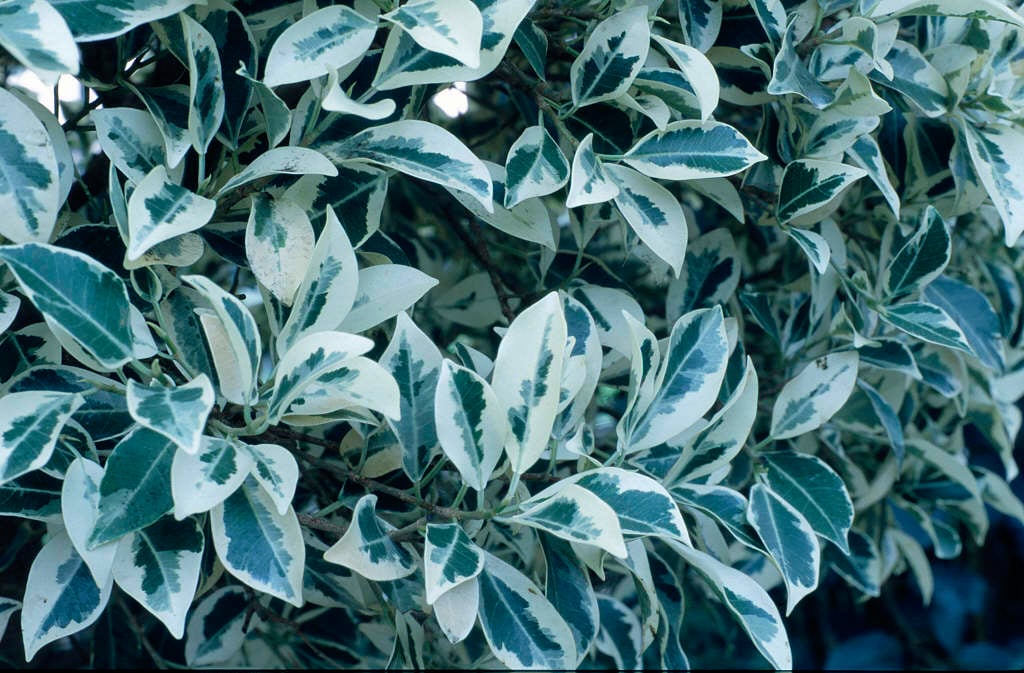Size
Ultimate height
4–8 metresTime to ultimate height
10–20 yearsUltimate spread
1.5–2.5 metresGrowing conditions
Moisture
Moist but well–drained, Well–drainedpH
Alkaline, NeutralColour & scent
| Stem | Flower | Foliage | Fruit | |
| Spring | Green Grey Silver Variegated White | |||
|---|---|---|---|---|
| Summer | Green Grey Silver Variegated White | |||
| Autumn | Green Grey Silver Variegated White | |||
| Winter | Green Grey Silver Variegated White |
Position
- Full sun
- Partial shade
Aspect
East–facing or North–facing or West–facing
Exposure
Sheltered Hardiness
H1BBotanical details
- Family
- Moraceae
- Native to GB / Ireland
- No
- Foliage
- Evergreen
- Habit
- Bushy
- Potentially harmful
- Skin allergen. Wear gloves and other protective equipment when handling
- Genus
Ficus can be evergreen or deciduous trees, shrubs or climbers, with often leathery, simple, entire or lobed leaves and tiny flowers borne within a hollow receptacle which enlarges to form the fruit
- Name status
Accepted
How to grow
Cultivation
Under glass, grow in peat-free, loam-based potting mix with added fine bark chippings, in filtered light. During growth water moderately and apply a high-nitrogen fertiliser every 4 weeks. See ornamental fig cultivation for more advice
Propagation
Propagate by seed at 15-21°C (59-70°F) in spring. Propagate by semi-ripe cuttings or leaf-bud cuttings with bottom heat in spring or summer
Suggested planting locations and garden types
- Patio and container plants
Pruning
Pests
May be susceptible to glasshouse red spider mite, thrips, mealybugs and scale insects under glass
Diseases
May be susceptible to honey fungus
Love gardening
Sign up to receive regular gardening tips, inspiration, offers and more
View our Privacy Policy
Get involved
The Royal Horticultural Society is the UK’s leading gardening charity. We aim to enrich everyone’s life through plants, and make the UK a greener and more beautiful place.
